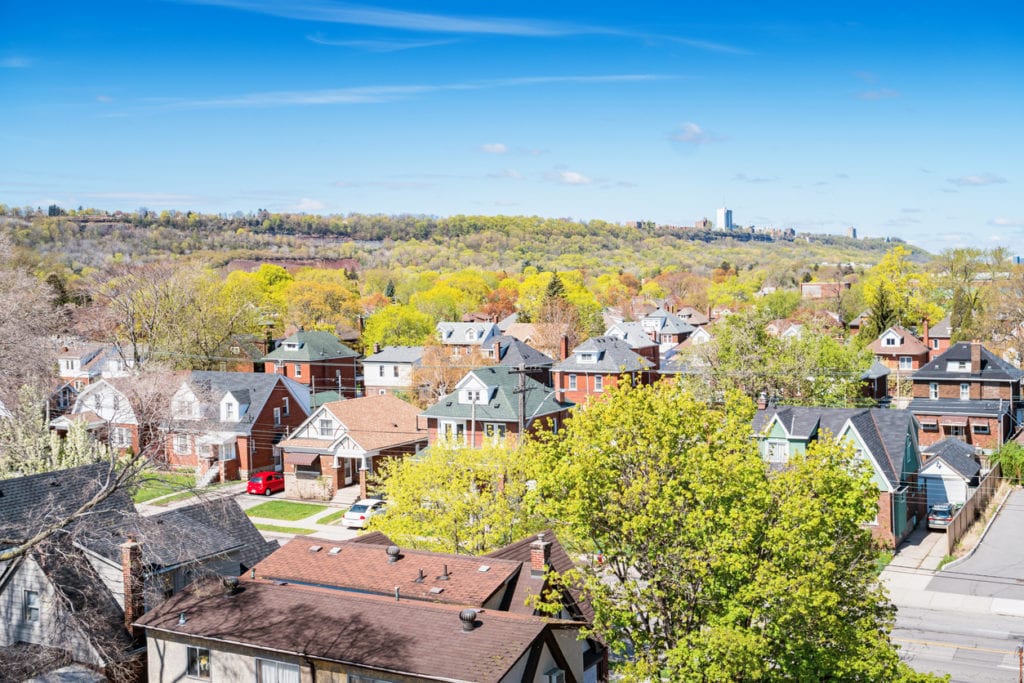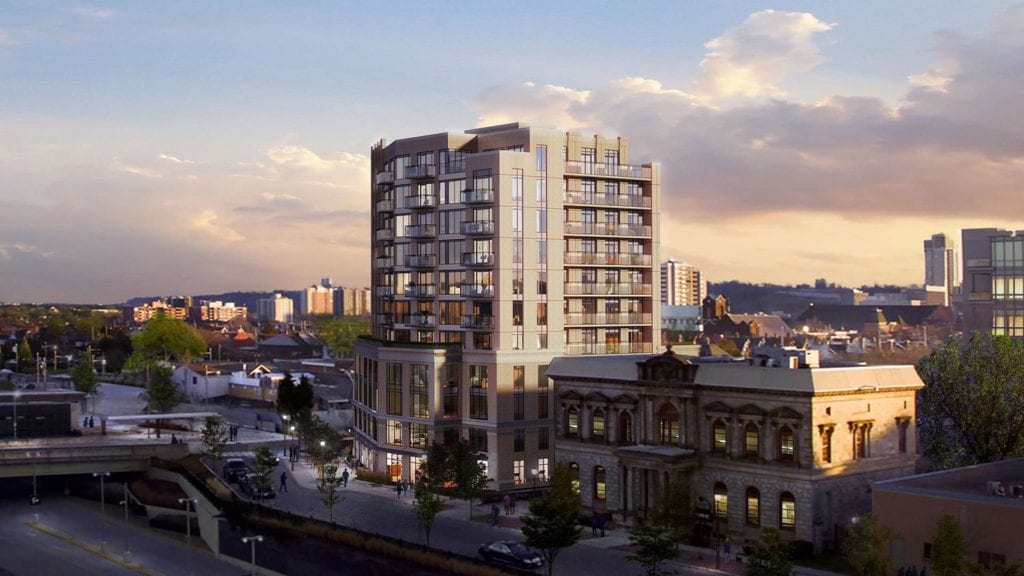
We entered 2018 with some of the most unprecedented changes that we’ve ever seen in the real estate market. January 1st saw the new mortgage rules take effect: a package of measures intended to make the requirements for mortgages more difficult to meet. The most impactful of these changes was the Stress Test. With the new Stress Test in place, about 20 percent was knocked off the average buyer’s budget by forcing them to undergo more strenuous financial qualifications.
Yet despite all of this government intervention, ultimately, the market stabilized fairly quickly ― these government interventions had only a temporary impact. While we are still feeling some impact from both the Stress Test and a sequence of interest rate increases by the Bank of Canada, the market is fundamentally strong.
Here is the 2018 year in review.
The Stress Test Forces Buyers to Rush Into the Market
After the Stress Test was implemented by the government, buyers found themselves no longer qualifying for just the rate posted at the bank. Instead, they had to qualify at a higher rate, so that ― in the event interest rates rose ― they would still be able to afford their property. On average, this reduced a buyer’s budget by about 20 percent. This was really an unprecedented strategy; nothing such as this has ever been attempted before. When combined with interest rates rising, it led to a situation in which many buyers were trying to get into the market ahead of the new changes.
The Bank of Canada Continues to Normalize Interest Rates in 2018
In addition to the Stress Test, the Bank of Canada continued increasing interest rates throughout the year. We were aware that interest rate increases were ahead, as the Bank of Canada has been bringing rates back to what we would consider to be more normal levels. Our interest rates have been held down artificially for years in order to stimulate economic growth.
From an economic perspective, the rules were a positive thing. They forced buyers to take on less debt, which has really slowed the growth in debt this year. It’s good that buyers have some room in their monthly budget, knowing that interest rates are going to be going back up to levels that we would consider normal.
Throughout the year, we saw three interest rate increases. Rates ended the year at 1.75 percent. We are now getting closer to the Bank of Canada’s neutral level, as they call it ― the level where interest rates should be based on the current state of the economy. This is estimated to be between 2.5 percent to 3.5 percent.
2018 in the Real Estate Market
Late fall and early winter of 2017 were much busier markets than we would normally see, as buyers were racing to get ahead of the incoming mortgage rules. They wanted to get ahead of the changes and have 20 percent more purchasing power. Consequently, we saw a very brisk December. This continued into January, as there were still buyers who had active pre-approvals from 2017, before the Stress Test was introduced.
As we reached February, it appeared that sales were starting to taper off. We ended up finishing the month, as a team, down a couple of sales ― which really wasn’t something to be concerned about. Despite the slowed sales, average sales prices continued to rise.
In terms of statistics, 2018 was an interesting year, as our monthly sales stats were being compared to sales stats from 2017 ― which was one of the busiest real estate markets we’ve ever witnessed. Consequently, as we hit March, we started to see a decrease in average sales prices. This decrease continued through April and May.
March, April and May 2017 were the peak of the market, and we had been forecasting that these months would see potential declines year-over-year. Average sales price decreased by 7.5 percent in March, 7.5 percent in April and 5.1 percent in May. They were declining as compared to three of the largest months for average sale price growth in history. In the spring of 2017, when the Fair Housing Plan was announced, buyers and sellers pulled back, and a huge wave of inventory quickly hit the market. This caused a slight decrease in average sale prices immediately after the plan was released. Prices were still up significantly but slightly lower than what we had temporarily experienced during March, April and May of 2017.
Unfortunately, these numbers made it appear to the news media as though the market was going down ― when, in reality, the market had already adjusted following the release of the Fair Housing Plan back in 2017 and had retained much of its value from those peak months.
Regardless, by the time we got to June, our stats were now being compared to the month following the real impact of the 2017 Fair Housing Plan. As we approached June, the numbers bounced back into positive territory ― as again, we were being compared to months after three of the busiest months in the market. Average sales prices returned to positive and remained positive throughout the rest of the year.
The Hamilton Real Estate Market as a Whole in 2018
If you take the real estate market as a whole, we ended the year up 1 percent. Our real estate board encompasses a vast number of different communities which have individual markets of their own. We’ll discuss how that actually breaks down by community later, as it paints a very different picture.
In 2018, sales were down 18 percent compared to the prior year. A total of 8,947 homes were sold in 2017 compared to 7,375 homes sold in 2018. That’s an 18 percent decrease. As we went through 2018, sales actually picked up ― but as an average of the entire year, the decline we saw in the first half weighed us down.
New listings were down 9 percent. With less fervor in the market in 2018 compared to 2017, fewer sellers felt inclined to put their homes on the market. However, active listings were up 16 percent, so there was a bit more inventory in the market overall.
In 2017, there were 1,062 listings on the market. In 2018, there were 1,232 new listings on the market. This isn’t a whole lot of inventory, and if you recall 2017, we literally had some of the lowest levels of inventory we’d ever seen.
Average sales prices were up 1 percent overall. The average sales price in 2017 was $501,654 ― and in 2018, it was $504,914 dollars. This is, again, the board average, with the amalgamation of all these different communities up by 1 percent. Many communities saw decreases in average sales price, such as Toronto. Other communities saw greater declines. Hamilton really held its own.
Days on market increased by 7.4 days. In 2017, the average time it took for a home to sell was 23 days. In 2018, homes sat, on average, 30 days, which is exceptional.
Digging in on a Community Level
Those were the numbers for Hamilton as a whole. Digging into this and taking a look at communities within the Hamilton, the story varies quite drastically, depending on where you live. The underlying fundamentals of the real estate market in the Hamilton area remain extremely strong. If the government had not intervened with the new mortgage rules and the Stress Test, our market would have grown considerably more.
Buyers were being redirected downwards, in the sense that they now need to reduce their budget by 20 percent of what it was in 2017.
The year 2018 saw buyers rushing downward in search of homes for less money. The lower-priced homes, the entry-level homes, were seeing even more demand than we had seen in the prior year. If you had a home priced anywhere under $500,000, things did not let up for you. If you had a home priced at $600,000 or more, the market slowed. This is revealed in these statistics for specific communities:
|
Community |
Average Sale Price |
Difference |
| Hamilton West | $483,561 | +3.28% |
| Hamilton East | $380-3436 | +6.02% |
| Hamilton Centre | $354,828 | +1.57% |
| Hamilton Mountain | $471,886 | +1.63% |
| Flamborough | $765,807 | -3.44% |
| Dundas | $606,384 | +0.04% |
| Ancaster | $738,972 | -4.14% |
| Waterdown | $659,245 | -3.09% |
| Stoney Creek | $534,498 | -3.13% |
| Glanbrook | $559,729 | +3.67% |
The more expensive communities, saw average sales prices decrease very slightly. Most communities in the $600,000+ range saw a bit of an adjustment in average sale price. The communities where average sales prices were below $500,000 saw increases. That’s what brings us to an average sales price, overall, for Hamilton of 1 percent. Keep in mind that these are average sale prices. With significantly more demand from buyers seeking affordability, average sale prices were impacted due to a larger volume of less expensive real estate trading hands, in comparison to 2017. Average sale prices are not always the best measure as they are just the average price of all real estate sold. A few higher priced sales can skew the numbers in a community to look much higher than they actually are. A larger number of lower priced homes trading hands can skew prices and lower the average sale price as well. Theres no debating the fact that buyers were in search of more affordable homes in 2018 which put a lot of downward pressure on average sale prices.
Hamilton Continued to Grow Through 2018
Hamilton itself continued to be a very strong market. Throughout 2018, values were up as much as 6 percent in parts of th city. Housing is driven by supply and demand. Our housing supply problem has not improved ― in fact, it is arguably worse than it was. We are running out of land. We are approaching our development boundaries. The Green Belt has been hit in many communities already, and we have no more room to spread out.
Meanwhile, the demand from buyers has not decreased. We have more immigrants coming in than ever before. Foreign students, workers, etc. ― there are a million people coming into the country every 12 months. Our schools are packed and in demand. We are an extremely desirable place. None of that has changed. None of what has caused the market to rise over the last 20 years has changed. In fact, those things have gotten stronger. The argument for home values to increase has gotten stronger.
On a local level, Hamilton continues to see revitalization in all areas. The city continues to turn around after decades of decline. Building permit records were hit again in 2018. Cranes are being erected to build new developments. Things here are really moving forward, better than they have in my lifetime. That has not changed. Buyers still flock to our market from the GTA
The only thing that changed were the rules enacted by the government, which, for the most part, are temporary. They are things that caused temporary psychological and financial impacts. We saw 2018 as a year in which the market, as a sponge, was absorbing all these things that had been swirling in at once. Yet the Hamilton market continued to grow.
Hamilton fared quite well. Even through March, April and May of 2018, when the stats were being compared to those hot three months the year prior, the market still performed better than average. Many parts of Hamilton didn’t just retain all their growth from those months, but some parts actually continued to grow year over year and posted gains, which is unprecedented.
We ended the year very strong. Hamilton East was up over 6 percent. Hamilton Centre and Hamilton East are now approaching $400,000 average sales prices. Hamilton West is approaching $500,000. Hamilton Mountain is approaching $500,000. Values in Hamilton are doing very well. Average sale prices in the suburbs will start creeping upward now that prices aren’t being compared to 2017 and now that the impact of the stress test has taken its course.
The Real Estate Market of 2018 in Review
Overall, 2018 was a positive year. It was a year in which the market was in the midst of absorbing a number of fairly significant and unprecedented changes. The underlying fundamentals of the market continue to be strong ― in fact, they’re arguably stronger than they were in 2017. Overall, the picture looks very positive, but it was a bit of a mixed bag in 2018 as we saw some pretty dramatic differences from community to community. Our long term outlook for Hamilton has not changed, there is plenty of growth coming to our area. All markets experience a few bumps after significant amounts of growth take place. Our sales history chart is a reminder that, despite a few temporary bumps along the way, Hamilton has continued to grow for decades.
Depending on where you’re looking to buy or sell, the reality could be very different. It’s important to take note of that and to make sure you’re planning accordingly and getting the right advice. Listening to the news and reading the overall numbers do not really tell you the full story. It requires a more in-depth analysis to really break things down, depending on whether you’re looking to buy or sell.
It will be interesting to see where 2019 brings us, but I anticipate that we will see growth in all areas. We don’t anticipate any major changes or interventions taking place.


